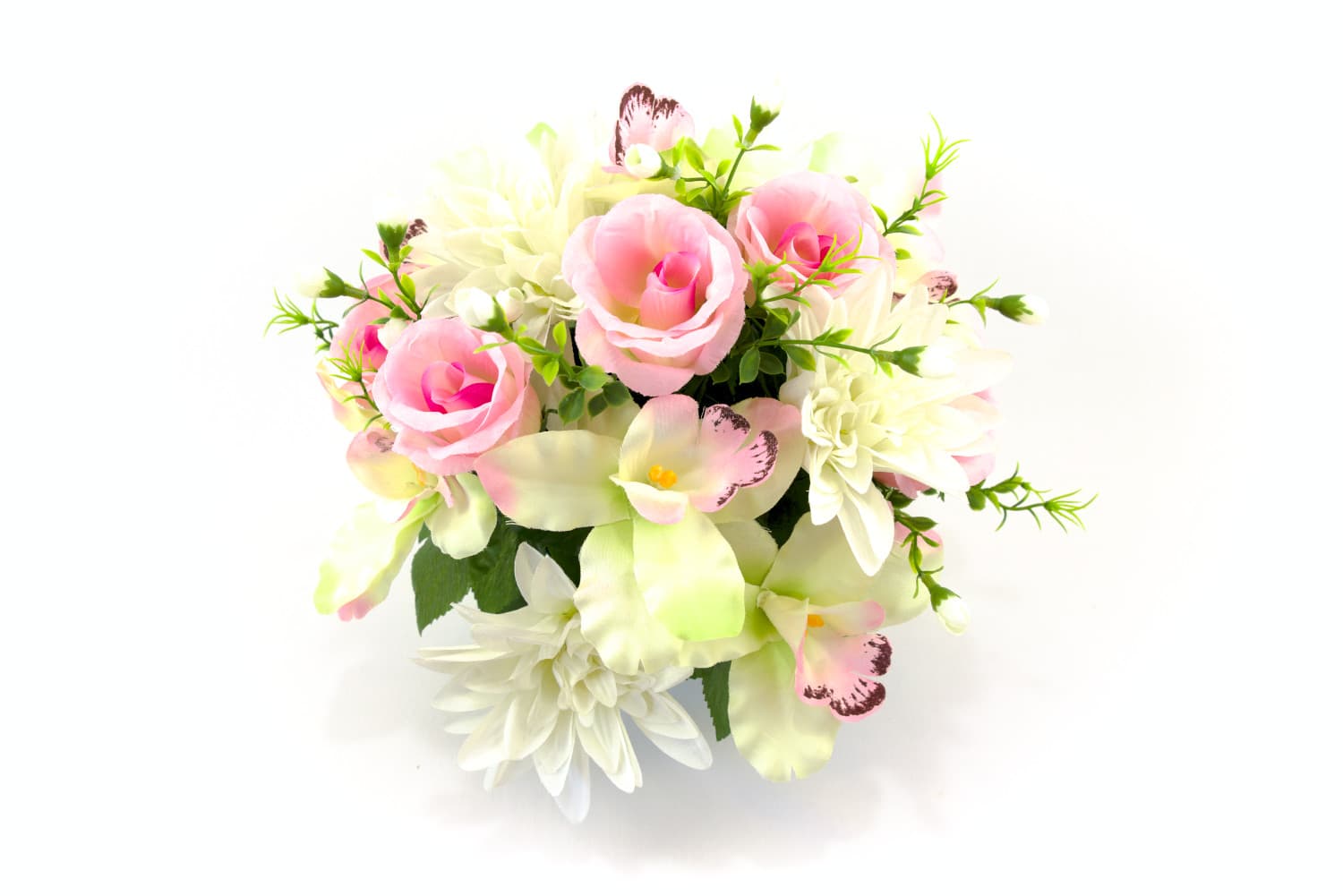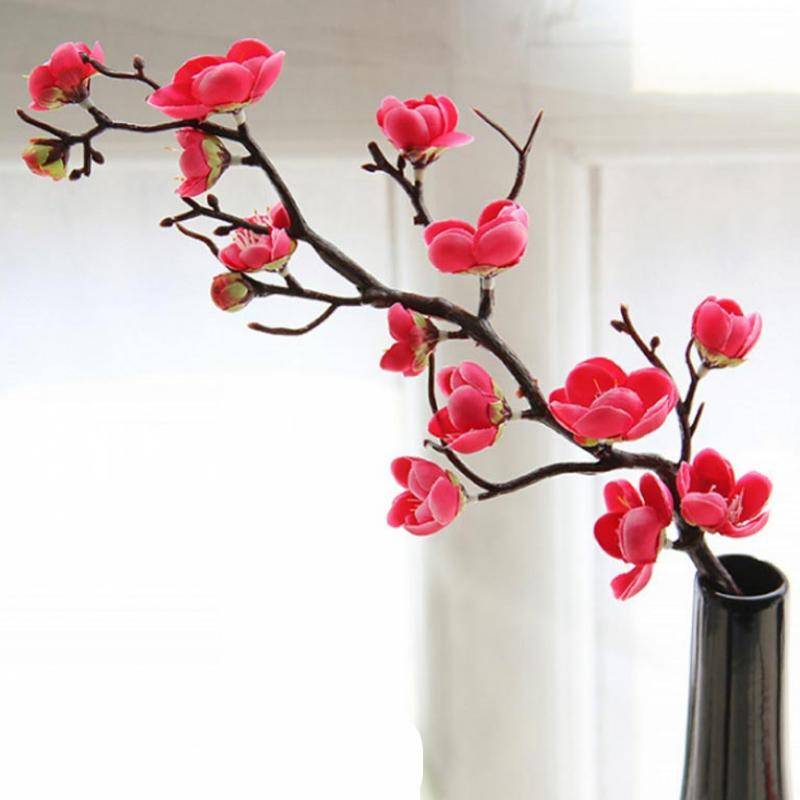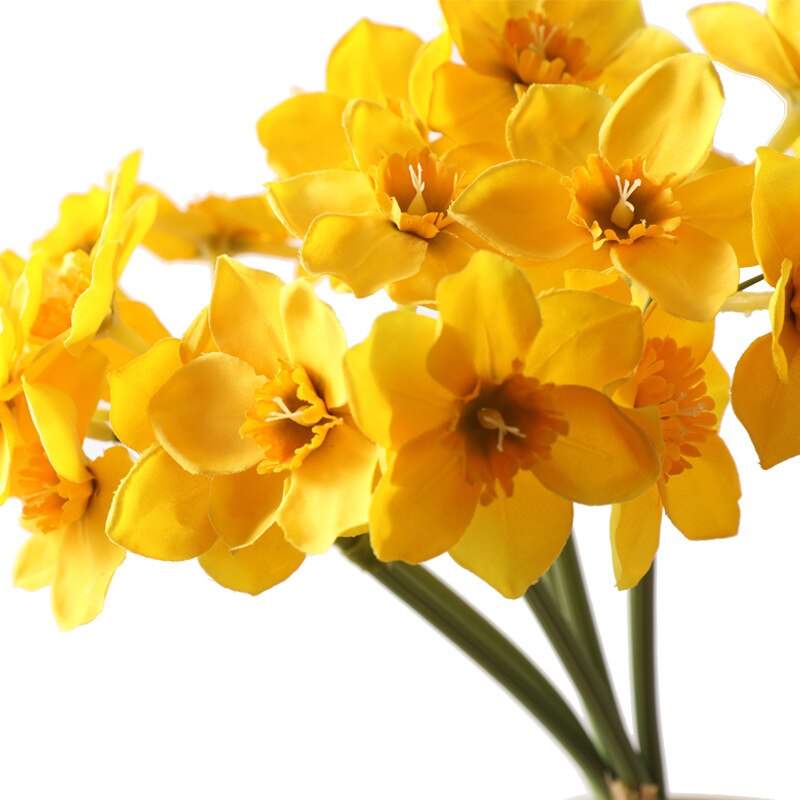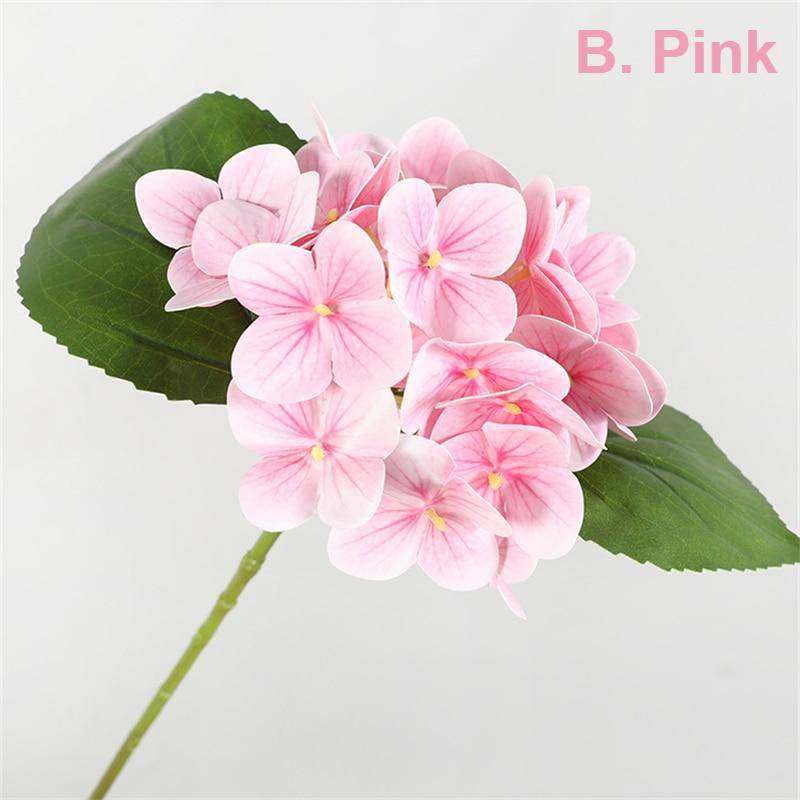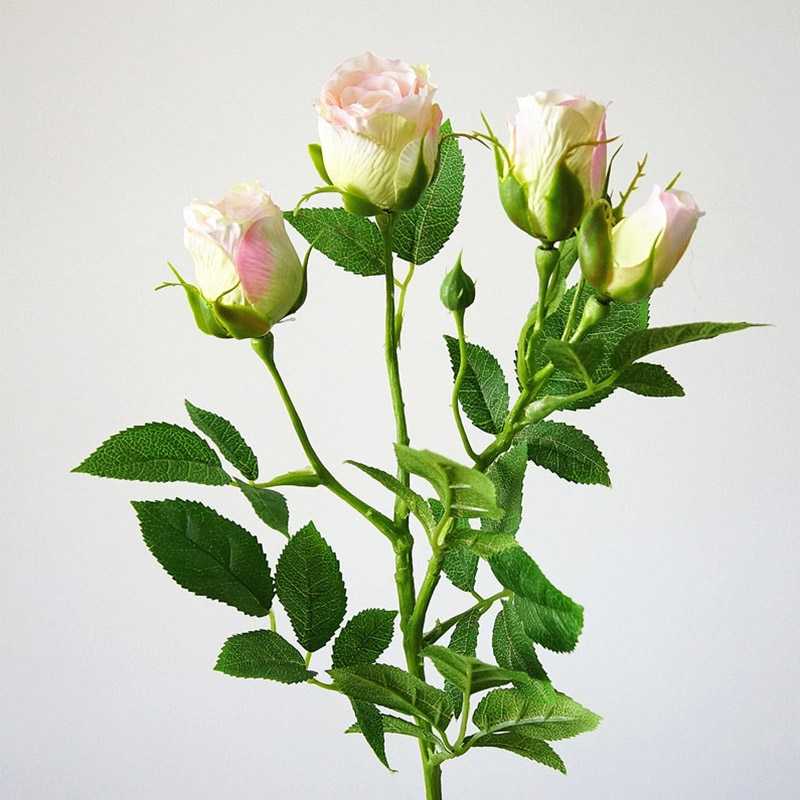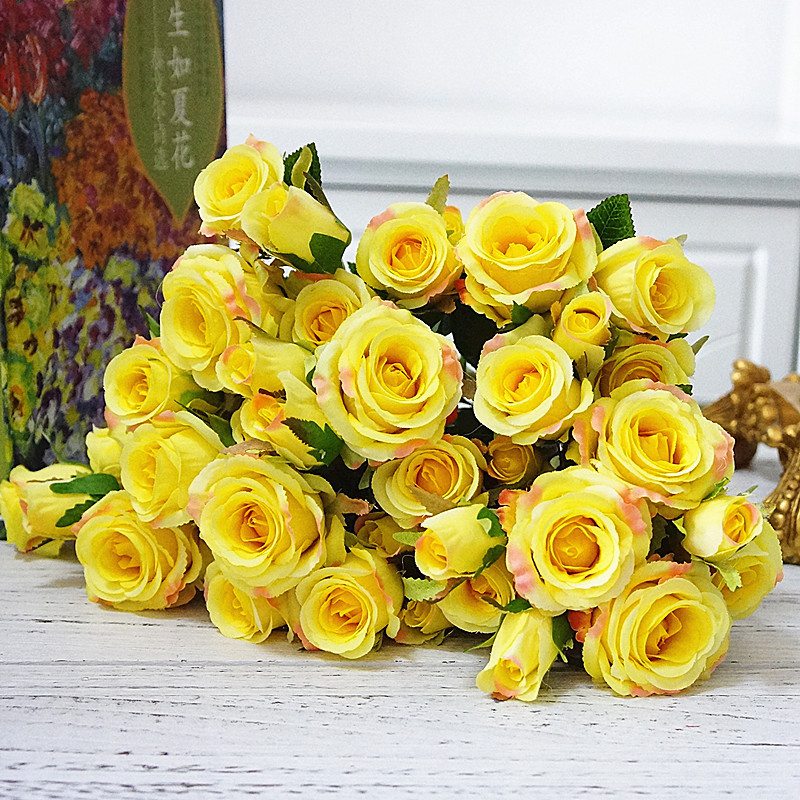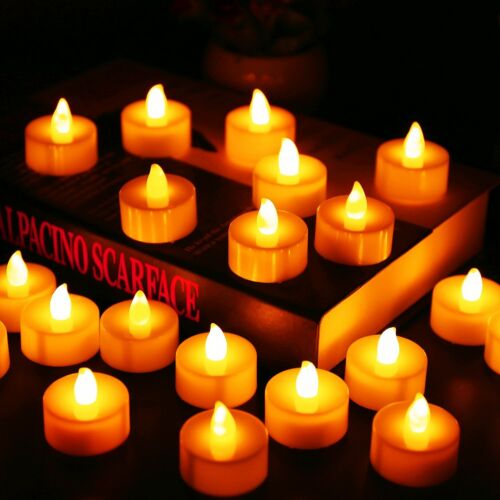
A to Z ~ Flowers Types + Symbolism + Colours + More, Guide.
T Flowers Guide.
T is for Faux Tiger Lily Flowers, a popular choice for those looking to add a touch of elegance and beauty to their home or event. These artificial flowers are a great option for those who may not have the time or ability to care for live plants, as they are easy to maintain and will last for years to come. They are also perfect for those who want to bring a burst of colour to their space, as they come in a variety of shades including orange, red, and yellow. Faux tiger lily flowers are a popular choice for decorating grave sites, as they are a symbol of prosperity, good fortune, and strength. They are a beautiful and timeless way to honour the memory of loved ones who have passed.
A to Z Flower Guide.
Tiger Lily ~ Lilium Tigrinum.
Symbolises ~ Strength, Courage, Nobility and Power.
Tiger Lily, scientifically known as Lilium tigrinum, is a species of lily that belongs to the Liliaceae Family. It is also known by other names such as Tigertail, Jungle Queen, and Catawbiense. This flower is widely recognised for its striking orange colour and distinctive black spots, hence the name “Tiger Lily.”
In historical documented time, the use of Tiger Lily in memorials, gravesites, and cemeteries is not as prevalent as other flowers such as roses and lilies. However, in Asian cultures, the Tiger Lily is considered to be a symbol of good fortune and prosperity. In Japan, for example, the Tiger Lily is seen as a symbol of courage, power, and pride, making it an appropriate flower to place at a gravesite or cemetery.
In Western cultures, the Tiger Lily has a different symbolic meaning. It is often associated with motherhood and is sometimes used to honour mothers who have passed away. The orange colour of the Tiger Lily is believed to symbolise warmth and love, making it a fitting flower to place at a gravesite or cemetery to honour the memory of a loved one.
The Tiger Lily is also sometimes used as a symbol of innocence, especially in religious contexts. In Christian culture, the Tiger Lily is often associated with the Virgin Mary and is sometimes used to decorate altars or shrines dedicated to her.
When purchasing a Tiger Lily for a cemetery or gravesite, it is important to consider the symbolism that the flower represents. If you are purchasing the flower to honour the memory of a loved one, it is recommended to choose a bright orange or yellow variety, as these colours are most commonly associated with warmth, love, and prosperity. If you are purchasing the flower to honour a mother, a white or cream-colored Tiger Lily may be more appropriate.
In terms of the faux version of the Tiger Lily for gravesites and cemeteries, it is important to note that these artificial flowers are made from durable materials such as silk or plastic, making them an ideal choice for outdoor use. They are also an affordable alternative to fresh flowers and can be used to create long-lasting tributes to loved ones.
In conclusion, the Tiger Lily is a beautiful and symbolic flower that is often used to honour the memory of loved ones. With its striking orange colour and distinctive black spots, the Tiger Lily is a fitting choice for those looking to create a lasting tribute to a loved one. Whether you choose a fresh or faux version of the Tiger Lily, this flower is sure to bring warmth, love, and prosperity to the gravesite or cemetery where it is placed.
Tulip ~
Symbolises ~ Love, Passion, Beauty, Renewal, Hope, and New Beginnings.
Today, the tulip is still a popular flower for cemetery decorations. It is often used in funeral arrangements and to decorate gravesites, and is thought to symbolise love, passion, and beauty. It is also a reminder of the promise of new beginnings, and the eternal cycle of life, death, and rebirth.
The Tulip is a flowering plant that belongs to the Liliaceae family. It is native to the mountainous regions of Central Asia and is widely cultivated in many parts of the world for its showy, cup-shaped flowers. Tulips are perennial plants, meaning they can live for more than two years and produce flowers every year.
There are many different species of Tulip, and they come in a range of colours including red, pink, purple, orange, yellow, and white. The tulip is a symbol of love, passion, and beauty. In many cultures, it is associated with renewal, hope, and new beginnings, and is often used in funeral arrangements and to decorate gravesites.
Tulips have a long history of cultural significance. In Turkish culture, the tulip was also associated with the divine, and was seen as a symbol of the Prophet Muhammad and his followers. They were first cultivated in the Ottoman Empire (present-day Turkey) in the 16th century and quickly became popular throughout Europe. Tulips were highly prized for their beauty and were often used as a symbol of wealth and status. In ancient Persia, the tulip was a symbol of the divine and was thought to represent the perfection of God.
In the Netherlands, the tulip is a national symbol and is associated with the Dutch Golden Age. During this period, the tulip was prized for its beauty and was a popular subject in art and literature.
In European culture, Tulips are often associated with feelings of love and passion. They are also seen as a symbol of renewal and are often given as gifts to express these emotions. In Japanese culture, Tulips are associated with the idea of “eternal love” and are seen as a symbol of commitment and devotion.
In Latin American cultures, Tulips are often associated with the Virgin Mary and are used in religious ceremonies and celebrations. In Pilipino culture, Tulips are seen as a symbol of good luck and are sometimes used in traditional flower arrangements.
In Greek culture, Tulips are associated with the goddess Aphrodite and are seen as a symbol of love and beauty. In Italian culture, Tulips are associated with the idea of “perfect love” and are seen as a symbol of deep, enduring affection.
In Vietnamese culture, Tulips are associated with the Lunar New Year and are often used in traditional floral arrangements. In Chinese culture, Tulips are associated with the Qingming Festival, also known as Tomb Sweeping Day, and are often used to decorate graves and tombs.
In English culture, Tulips are often associated with spring and are seen as a symbol of renewal and new beginnings. They are also popular in English gardens and are appreciated for their colourful, showy flowers.
If you purchase and place Tulips at a cemetery or grave site, they may be seen as a symbol of respect and honour for the deceased. They may also be seen as a way to express feelings of love and affection, as Tulips are often associated with these emotions. Additionally, the bright, colourful flowers of the Tulip may be seen as a way to bring cheer and joy to a somber setting.
Orange Tulip ~
The Orange Tulip is a vibrant and bold flower that has captured the imagination of people for centuries. Native to the Middle East and Central Asia, tulips were introduced to Europe in the 16th century and quickly became one of the most popular flowers in the world. The bright orange colour of the Orange Tulip symbolises energy, enthusiasm, and happiness, making it a popular flower for special occasions and celebrations.
In Christianity, the Orange Tulip has a more limited role in symbolism. Unlike other tulip colours, such as the red tulip, the orange tulip is not widely associated with any specific religious significance. However, tulips of any colour are often given as gifts on Easter Sunday as a symbol of hope, renewal, and the resurrection of Jesus.
In other cultures, and religions, the Orange Tulip is often associated with good luck and prosperity. In Hinduism, the orange colour of the tulip symbolises passion, happiness, and success. In Chinese culture, the tulip is often associated with wealth, prosperity, and good fortune, and is a popular flower for celebrations such as weddings, birthdays, and anniversaries.
Orange Tulips are also known for several important days. On National Tulip Day, which takes place on January 18th, many people celebrate the holiday by giving orange tulips as gifts to friends and loved ones or by visiting local gardens and parks to enjoy the beauty of tulips. Additionally, tulips of all colours are often given as gifts on Easter Sunday as a symbol of hope, renewal, and the resurrection of Jesus.
When Orange Tulips are placed at a cemetery or gravesite, they often symbolise energy, enthusiasm, and life. The bright orange colour serves as a reminder of the joy and excitement that life has to offer, and the beauty and grace of life. Tulips are often placed on graves to show respect and honour for the deceased, and to pay homage to the memories and moments shared with them.
In conclusion, the Orange Tulip is a beautiful and vibrant flower with a rich history and cultural significance. From its association with good luck and prosperity in various cultures, to its use as a symbol of energy, happiness, and respect, the Orange Tulip holds a special place in the hearts of many people around the world. Whether it is used as a symbol of celebration, joy, or respect, the Orange Tulip serves as a reminder of the power of beauty and the significance of life.
Pink Tulip ~
The Pink Tulip is a popular and beloved flower known for its delicate beauty and soft pink colour. It is a member of the tulipa genus and is native to the Middle East, specifically Iran and Central Asia. Tulips were introduced to Europe in the 16th century, and since then have become one of the most popular flowers in the world. Pink tulips, in particular, are associated with love, grace, and affection.
In Christianity, the Pink Tulip has a special symbolism. The soft pink colour is often associated with the gentle and pure love of Christ, and the flower is seen as a symbol of hope, renewal, and resurrection. Pink tulips are often used in religious celebrations such as Easter, Christmas, and Good Friday, reminding Christians of the sacrifice and love of Jesus. Additionally, the delicate beauty of the pink tulip is seen as a symbol of the purity and grace of the Virgin Mary, making it a popular flower for Marian celebrations.
In other religions and cultures, the pink tulip also holds a significant place. In Islamic culture, tulips are often associated with the Garden of Paradise, representing eternal life and beauty. In Hinduism, tulips symbolise love, happiness, and good fortune. In Chinese culture, the tulip is often associated with a long life and happiness, and is a popular flower for celebrations such as birthdays and anniversaries.
Pink Tulips are also known for several important days. On April 26th, National Pretzel Day, many people celebrate the holiday by giving pink tulips as gifts. In addition, tulips are also commonly given on Valentine’s Day as a symbol of love and affection. Mother’s Day is also an important day for pink tulips, as they are seen as a symbol of love and appreciation for mothers.
When pink tulips are placed at a cemetery or gravesite, they often symbolise remembrance and honour for the person who has passed away. The soft pink colour of the tulip is a symbol of the love and gentle spirit of the person, and serves as a reminder of their legacy. Tulips are often placed on graves to show respect and honour for the deceased, and to pay homage to the memories and moments shared with them.
In conclusion, the Pink Tulip is a beautiful and symbolic flower that has a rich history and cultural significance. From its association with Christianity and religious celebrations, to its use as a symbol of love, happiness, and remembrance, the Pink Tulip holds a special place in the hearts of many people around the world.
Purple Tulip ~
The Purple Tulip is a striking and elegant flower known for its vibrant colour and delicate beauty. It is a member of the tulipa genus and is native to the Middle East, specifically Iran and Central Asia. Tulips were introduced to Europe in the 16th century and have since become one of the most popular flowers in the world. The colour purple is often associated with royalty and luxury, making the Purple Tulip a symbol of prestige and sophistication.
In Christianity, the Purple Tulip has a special significance. The colour purple is often associated with Lent, the period of fasting and sacrifice leading up to Easter. During Lent, many Christians wear purple as a symbol of their spiritual journey and devotion to God. The Purple Tulip serves as a reminder of this period of sacrifice and spiritual growth, and is often used in religious celebrations and services during Lent.
In other religions and cultures, the Purple Tulip also holds a significant place. In Islamic culture, tulips are often associated with the Garden of Paradise, representing eternal life and beauty. In Hinduism, tulips symbolise love, happiness, and good fortune. In Chinese culture, the tulip is often associated with a long life and happiness, and is a popular flower for celebrations such as birthdays and anniversaries.
Purple Tulips are also known for several important days. On April 26th, National Pretzel Day, many people celebrate the holiday by giving purple tulips as gifts. Additionally, tulips are often given as gifts on Easter Sunday as a symbol of hope, renewal, and the resurrection of Jesus.
When Purple Tulips are placed at a cemetery or gravesite, they often symbolise mourning and loss. The colour purple is traditionally associated with sadness and grief, and the delicate beauty of the tulip serves as a reminder of the fragility of life. Tulips are often placed on graves to show respect and honour for the deceased, and to pay homage to the memories and moments shared with them.
In conclusion, the Purple Tulip is a beautiful and symbolic flower with a rich history and cultural significance. From its association with Christianity and religious celebrations, to its use as a symbol of prestige, mourning, and respect, the Purple Tulip holds a special place in the hearts of many people around the world. Whether it is used as a symbol of hope, love, or loss, the Purple Tulip serves as a reminder of the power of beauty and the significance of life.
Red Tulip ~
The red tulip is a popular flower that is widely known for its vibrant red colour and delicate beauty. It is a member of the tulipa Genus, and is native to the Middle East, specifically Iran and Central Asia. Tulips were introduced to Europe in the 16th century, and since then have become one of the most popular flowers in the world, symbolising love, passion, and perfection.
In Christianity, the red tulip has a significant symbolism, representing the blood of Christ and the sacrifice he made for humanity. The vibrant red colour of the tulip is associated with the passion and love of Jesus, making it a popular flower for religious celebrations such as Easter, Christmas, and Good Friday. Tulips have also been used as a symbol of faith, reminding Christians of the strength and courage of Jesus and the eternal life that he offers to those who believe in him.
In other religions, tulips are also associated with religious and cultural significance. In Islamic culture, tulips are often associated with the Garden of Paradise, representing eternal life and beauty. In Hinduism, tulips symbolise love, happiness, and good fortune. In Chinese culture, the tulip is often associated with a long life and happiness, and is a popular flower for celebrations such as birthdays and anniversaries.
Tulips are also known for several important days, including Tulip Day, which is celebrated on January 15th and is a day dedicated to appreciating the beauty and symbolism of tulips. Tulips are also popular for Mother’s Day, as they are seen as a symbol of love and appreciation for mothers. In addition, tulips are also commonly given on Valentine’s Day as a symbol of love and affection.
When tulips are placed at a cemetery or gravesite, they often symbolise remembrance and honour for the person who has passed away. The bright and vibrant red colour of the tulip is a symbol of the life and energy that the person brought to the world, and serves as a reminder of their legacy. Tulips are often placed on graves to show respect and honour for the deceased, and to pay homage to the memories and moments shared with them.
In conclusion, the red tulip is a beautiful and symbolic flower that has a rich history and cultural significance. From its association with Christianity and religious celebrations, to its use as a symbol of love, happiness, and remembrance, the red tulip holds a special place in the hearts of many people around the world.
Yellow Tulip ~
The Yellow Tulip is a bright and cheerful flower that has been cherished for its beauty and significance for centuries. Native to the Middle East and Central Asia, tulips were introduced to Europe in the 16th century and quickly became one of the most popular flowers in the world. The bright yellow colour of the Yellow Tulip is often associated with happiness, sunshine, and joy, making it a popular flower for celebrations and special occasions.
In Christianity, the Yellow Tulip holds a special significance. The colour yellow is often associated with hope and renewal, and the tulip is often seen as a symbol of the resurrection of Jesus. Yellow Tulips are often used in religious celebrations and services, and are often given as gifts on Easter Sunday to symbolise the hope and joy of the holiday.
In other religions and cultures, the Yellow Tulip also holds a special place. In Islamic culture, tulips are often associated with the Garden of Paradise, representing eternal life and beauty. In Hinduism, tulips symbolise love, happiness, and good fortune. In Chinese culture, the tulip is often associated with a long life and happiness, and is a popular flower for celebrations such as birthdays and anniversaries.
Yellow Tulips are also known for several important days. On April 11th, National Pet Day, many people celebrate the holiday by giving yellow tulips as gifts to their pets or by visiting animal shelters to show support for animals in need. Additionally, tulips are often given as gifts on Easter Sunday as a symbol of hope, renewal, and the resurrection of Jesus.
When Yellow Tulips are placed at a cemetery or gravesite, they often symbolise hope, renewal, and comfort. The bright yellow colour serves as a reminder of the eternal cycle of life, death, and rebirth, and the beauty and joy of life. Tulips are often placed on graves to show respect and honour for the deceased, and to pay homage to the memories and moments shared with them.
In conclusion, the Yellow Tulip is a beautiful and symbolic flower with a rich history and cultural significance. From its association with Christianity and religious celebrations, to its use as a symbol of hope, love, and comfort, the Yellow Tulip holds a special place in the hearts of many people around the world. Whether it is used as a symbol of happiness, hope, or respect, the Yellow Tulip serves as a reminder of the power of beauty and the significance of life.
White Tulip ~
The White Tulip is a classic and elegant flower that has been cherished for its beauty and symbolism for centuries. Native to the Middle East and Central Asia, tulips were introduced to Europe in the 16th century and quickly became one of the most popular flowers in the world. The pure white colour of the White Tulip is often associated with purity, innocence, and grace, making it a popular flower for important celebrations and special occasions.
In Christianity, the White Tulip holds a special significance. White is often associated with purity and holiness, and the tulip is often seen as a symbol of the innocence and perfection of the Virgin Mary. White Tulips are often used in religious celebrations and services, and are often given as gifts on important holy days such as Christmas, Easter, and All Saints’ Day.
In other religions and cultures, the White Tulip also holds a special place. In Islamic culture, tulips are often associated with the Garden of Paradise, representing eternal life and beauty. In Hinduism, tulips symbolise love, happiness, and good fortune. In Chinese culture, the tulip is often associated with a long life and happiness, and is a popular flower for celebrations such as birthdays and anniversaries.
White Tulips are also known for several important days. On April 27th, National White Flower Day, many people celebrate the holiday by giving white tulips as gifts to friends and loved ones or by visiting local gardens and parks to enjoy the beauty of white flowers. Additionally, tulips are often given as gifts on Easter Sunday as a symbol of hope, renewal, and the resurrection of Jesus.
When White Tulips are placed at a cemetery or gravesite, they often symbolise purity, innocence, and respect. The pure white colour serves as a reminder of the eternal cycle of life, death, and rebirth, and the beauty and grace of life. Tulips are often placed on graves to show respect and honour for the deceased, and to pay homage to the memories and moments shared with them.
In conclusion, the White Tulip is a beautiful and symbolic flower with a rich history and cultural significance. From its association with Christianity and religious celebrations, to its use as a symbol of purity, love, and respect, the White Tulip holds a special place in the hearts of many people around the world. Whether it is used as a symbol of happiness, hope, or respect, the White Tulip serves as a reminder of the power of beauty and the significance of life.



